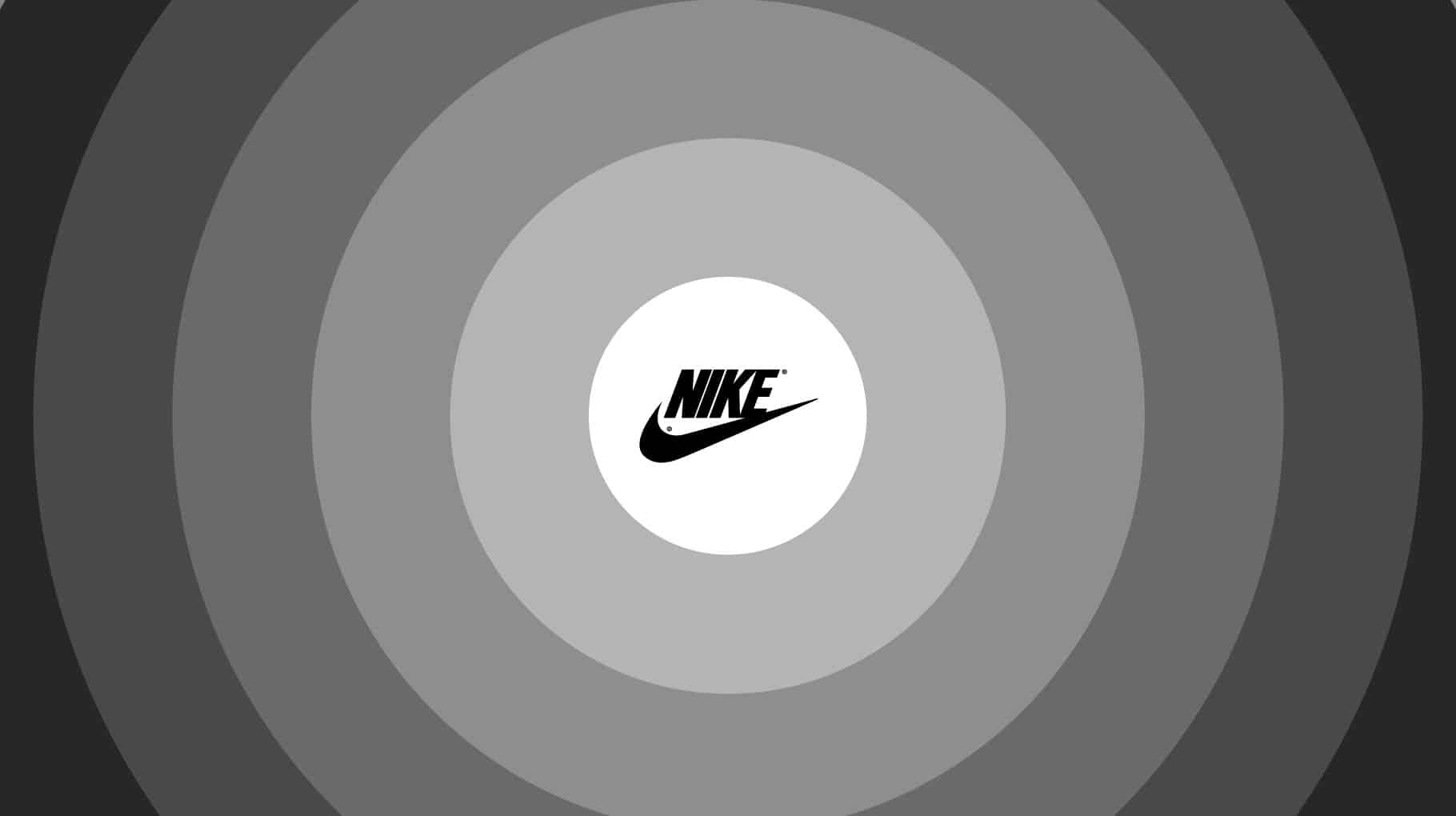
This research article delves into Nike‘s revenue, valuation, growth, customer demography, number of employees and more.
These amazing facts showcase Nike’s incredible journey from a small startup to a global powerhouse in the sports industry, fueled by innovation, iconic branding, and a passion for empowering athletes and sports enthusiasts worldwide.
| Key Stat | Info |
|---|---|
| Founder(s) | Bill Bowerman and Phil Knight |
| Formerly Known As | Blue Ribbon Sports (BRS) |
| Branded as Nike on | January 25, 1964 |
| Headquarters | Beaverton, Oregon, United States |
| Industry | Sportswear and Athletic Equipment |
| Owners | Publicly traded company with shareholders |
| Type | Public |
| CEO (current) | John Donahoe |
| Service Area | Worldwide |
| Website | http://www.nike.com/ |
Nike, Inc. is a global company that specializes in designing, developing, manufacturing, and marketing athletic footwear, apparel, equipment, and accessories. It was founded in 1964 by Bill Bowerman and Phil Knight as Blue Ribbon Sports (BRS) and later changed its name to Nike in 1971, inspired by the Greek goddess of victory.
Headquartered in Beaverton, Oregon, USA, Nike is now one of the world’s leading sportswear brands, and its iconic “swoosh” logo is recognized globally, representing the brand’s commitment to innovation, performance, and style.
Nike offers a wide range of products that caters to athletes and sports enthusiasts of all ages and disciplines. This includes athletic footwear, such as running shoes, basketball shoes, soccer cleats, and more.
The sportswear collection includes clothing such as t-shirts, shorts, tracksuits, and hoodies designed for various sports and fitness activities. Additionally, Nike produces a diverse range of accessories and equipment for athletes, including backpacks, duffel bags, fitness trackers, and sports gear.
As a publicly traded company, Nike operates globally and has a strong focus on innovation and marketing. The brand maintains partnerships with top athletes and teams, contributing to its immense popularity and influence in the sports industry.
Nike’s commitment to social and environmental responsibility is reflected in its sustainable practices and initiatives. The company actively promotes community engagement, diversity, and inclusion through various programs and sponsorships.
With its powerful brand presence, continuous product innovation, and global reach, Nike continues to be a major player in the athletic footwear and sportswear market, inspiring athletes and consumers worldwide to “Just Do It.”
As of 2023, Nike’s brand value is estimated at around $31 billion, which is a decrease of nearly $2 billion compared to the previous year. However, Nike still maintains its position as a top and influential brand in the sportswear industry, renowned for its iconic logo, innovative products, and global reach.
| Year | Valuation |
|---|---|
| 2023 | $31.307 billion |
| 2022 | $33.176 billion |
| 2021 | $30.443 billion |
| 2020 | $34.792 billion |
| 2019 | $32.421 billion |
| 2018 | $28.03 billion |
| 2017 | $31.762 billion |
| 2016 | $28.041 billion |
Source: Statista
Nike, being one of the top sports brands globally, has shown consistent and impressive growth in its revenue worldwide through the years. In 2022, the company achieved a record-breaking revenue of around $46.71 billion, a notable increase of over two billion compared to the previous fiscal year.
Below is an overview of Nike’s revenue progression in recent years:
| Year | Revenue |
|---|---|
| 2022 | $46.71 billion |
| 2021 | $44.54 billion |
| 2020 | $37.40 billion |
| 2019 | $39.11 billion |
| 2018 | $36.40 billion |
| 2017 | $34.35 billion |
| 2016 | $32.38 billion |
| 2015 | $30.60 billion |
| 2014 | $27.80 billion |
| 2013 | $25.31 billion |
| 2012 | $23.33 billion |
| 2011 | $20.11 billion |
| 2010 | $18.32 billion |
| 2009 | $18.53 billion |
| 2008 | $18.63 billion |
| 2007 | $16.33 billion |
| 2006 | $14.96 billion |
| 2005 | $13.74 billion |
Source: Statista
According to the data, North America is consistently the top revenue generator for Nike, making it the company’s most significant market. Nike has experienced steady growth over the years in Europe, the Middle East & Africa, Greater China, and Asia Pacific & Latin America, with these regions contributing significantly to Nike’s overall revenue.
This demonstrates the brand’s global popularity and success in various markets.
| Year | North America | Europe, Middle East & Africa | Greater China | Asia Pacific & Latin America | Global brand divisions |
|---|---|---|---|---|---|
| 2022 | $18.35 billion | $12.48 billion | $7.55 billion | $5.96 billion | $102 million |
| 2021 | $17.18 billion | $11.46 billion | $8.29 billion | $5.34 billion | $25 million |
| 2020 | $14.48 billion | $9.35 billion | $6.68 billion | $5.03 billion | $30 million |
| 2019 | $15.9 billion | $9.81 billion | $6.21 billion | $5.25 billion | $42 million |
| 2018 | $14.86 billion | $9.24 billion | $5.13 billion | $5.17 billion | $88 million |
| 2017 | $15.22 billion | $7.97 billion | $4.24 billion | $4.74 billion | $73 million |
Source: Statista
During the fiscal year of 2022, Nike saw a notable portion of its revenue coming from non-U.S. markets, which accounted for 60% of its total earnings.
This trend of increasing sales outside of the United States has continued over the years. In comparison, 40% of the revenue in 2022 was generated from the United States.
This expansion into international markets showcases the brand’s global influence and success in capturing audiences beyond its domestic market.
| Year | United States | Non-U.S. markets |
|---|---|---|
| 2022 | 40% | 60% |
| 2021 | 39% | 61% |
| 2020 | 39% | 61% |
| 2019 | 41% | 59% |
| 2018 | 42% | 58% |
| 2017 | 46% | 54% |
| 2016 | 47% | 53% |
Source: Statista
Nike achieved a gross profit of around 21.5 billion U.S. dollars in fiscal year 2022, a significant increase from the 12.4 billion U.S. dollars recorded in 2014.
This impressive growth demonstrates Nike’s ability to capitalize on market opportunities effectively, expand its product offerings, and maintain a strong global presence.
The consistent rise in gross profit over the years speaks to Nike’s successful business strategies and leadership position in the sports and athletic wear industry.
As a result, Nike remains a profitable and financially strong company, driving innovation and growth in the global market.
| Year | Gross Profit |
|---|---|
| 2022 | $21.48 billion |
| 2021 | $19.96 billion |
| 2020 | $16.24 billion |
| 2019 | $17.47 billion |
| 2018 | $15.96 billion |
| 2017 | $15.31 billion |
| 2016 | $14.97 billion |
| 2015 | $14.07 billion |
| 2014 | $12.45 billion |
Source: Statista
Nike is a brand that supports a wide range of sports and athletes worldwide. Nike is particularly associated with various sports, including:
Nike’s commitment to sports extends beyond professional athletes, as they also focus on promoting sports and active lifestyles among the general public, encouraging people of all ages to participate in physical activities.
Nike’s footwear segment in North America is its most profitable product category, consistently outperforming both the apparel and equipment segments in terms of revenue.
In 2022, Nike’s revenue from footwear in North America reached an impressive $12.23 billion – surpassing the combined revenue of the apparel and equipment segments, which generated $5.49 billion and $633 million, respectively.
The following table showcases Nike’s North American revenue from 2009 to 2022, highlighting the significant growth in all three segments compared to previous years.
| Year | Footwear | Apparel | Equipment |
|---|---|---|---|
| 2022 | $12.23 billion | $5.49 billion | $633 million |
| 2021 | $11.64 billion | $5.03 billion | $507 million |
| 2020 | $9.33 billion | $4.64 billion | $516 million |
| 2019 | $10.04 billion | $5.26 billion | $597 million |
| 2018 | $9.32 billion | $4.94 billion | $595 million |
| 2017 | $9.68 billion | $4.87 billion | $646 million |
| 2016 | $9.30 billion | $4.75 billion | $719 million |
| 2015 | $8.51 billion | $4.41 billion | $824 million |
| 2014 | $7.50 billion | $3.94 billion | $867 million |
| 2013 | $6.75 billion | $3.59 billion | $816 million |
| 2012 | $5.94 billion | $2.99 billion | $604 million |
| 2011 | $5.11 billion | $2.1 billion | $365 million |
| 2010 | $4.61 billion | $1.74 billion | $346 million |
| 2009 | $4.69 billion | $1.74 billion | $344 million |
Source: Statista
The world of sneaker collecting has seen some extraordinary prices for rare and limited-edition Nike footwear. Here are some of the most expensive Nike shoes ever sold:
These iconic and highly sought-after shoes not only represent the pinnacle of design and style but have also become symbols of exclusivity and luxury in the sneaker world.
Collectors and enthusiasts alike continue to be amazed by the prices these rare Nike shoes can command in the market.
Source: Luxe Digital
Nike is known for its quality and innovative footwear, catering to both sports and lifestyle needs. The average price of Nike shoes has varied in recent years, due to factors such as the introduction of new technology, enhancements in design, and the types of collections released annually.
Please find below a breakdown of the average prices for Nike shoes in recent years:
| Release Year | Average Price |
|---|---|
| 2021 | $130.50 |
| 2020 | $141.22 |
| 2019 | $126.11 |
Source: RunRepeat
Nike’s advertising strategy is powerful and innovative, connecting the brand with its target audience on various platforms. By leveraging high-profile athletes, celebrities, and influencers, Nike creates a strong emotional bond with consumers, inspiring them with its iconic “Just Do It” slogan introduced in 1988.
The brand’s advertising efforts encompass multiple channels, including:
Through these diverse advertising channels, Nike reinforces its image as a symbol of aspiration, empowerment, and authenticity, making it a dominant force in the sports and athletic wear industry worldwide.
As one of the world’s leading sports brands, Nike consistently invests significant resources into advertising and promotion. In the 2022 fiscal year, the company allocated approximately $3.85 billion to advertising.
Nike’s “Just Do It” slogan continues to inspire millions worldwide, and the brand’s ongoing investment in advertising reinforces its dominant position in the global sports and athletic wear industry.
This substantial budget demonstrates Nike’s dedication to maintaining a strong and widespread global presence.
Over the past few years, Nike’s advertising costs have consistently increased, as shown by the following figures:
| Year | Advertising costs |
|---|---|
| 2022 | $3.85 billion |
| 2021 | $3.11 billion |
| 2020 | $3.59 billion |
| 2019 | $3.75 billion |
| 2018 | $3.58 billion |
| 2017 | $3.34 billion |
| 2016 | $3.28 billion |
| 2015 | $3.2 billion |
| 2014 | $3 billion |
Source: Statista
Nike currently operates 1,046 retail stores worldwide as of May 31, 2022, demonstrating the brand’s strong global retail presence. While there was a slight decrease of two stores compared to the previous financial year, the number of Nike retail stores has remained relatively stable over the years.
Nike’s extensive retail network plays a crucial role in bringing its premium athletic wear and footwear to consumers worldwide, contributing to the brand’s global success and popularity.
Below is an overview of Nike’s retail store count in recent years:
| Year | Retail Store Count |
|---|---|
| 2022 | 1046 stores |
| 2021 | 1048 stores |
| 2020 | 1096 stores |
| 2019 | 1152 stores |
| 2018 | 1182 stores |
| 2017 | 1142 stores |
| 2016 | 1045 stores |
| 2015 | 931 stores |
| 2014 | 858 stores |
| 2013 | 753 stores |
| 2012 | 826 stores |
| 2011 | 756 stores |
| 2010 | 689 stores |
| 2009 | 674 stores |
Source: Statista
Nike, a leading global athletic footwear brand, has consistently maintained a strong market share in the sports and sports-inspired footwear segment. Industry analysts predict that from 2019 to 2025, Nike will maintain a global market share of around 27.4%.
Nike’s innovation, branding, and marketing have made it a dominant player in athletics. By connecting with consumers and athletes worldwide, it has cemented its reputation as a go-to brand for sports enthusiasts.
As it expands its offerings, Nike remains at the forefront of athletic footwear.
| Year | Global market share |
|---|---|
| 2023 | 27.40% |
| 2022 | 27.40% |
| 2021 | 27.40% |
| 2020 | 27.40% |
| 2019 | 27.40% |
| 2018 | 26.94% |
| 2017 | 25.44% |
| 2016 | 25.01% |
| 2015 | 23.95% |
| 2014 | 22.49% |
| 2013 | 19.66% |
| 2012 | 18.39% |
| 2011 | 16.77% |
Source: Statista
Nike is widely recognized and popular in the United States, with 95% of consumers being aware of the brand. Around 67% of respondents prefer Nike, highlighting its high popularity in the sports apparel market.
Additionally, 61% of consumers actively use Nike products, indicating the brand’s strong presence in their daily lives.
Nike has also earned loyalty from 53% of customers who consistently choose it over other options. With 47% expressing excitement and engagement, Nike generates substantial buzz among consumers.
These statistics showcase Nike’s dominant position in the US sports and athletic wear industry.
| Characteristic | Share of respondents |
|---|---|
| Awareness | 95% |
| Popularity | 67% |
| Usage | 61% |
| Loyalty | 53% |
| Buzz | 47% |
Source: Statista
Nike has established impressive brand recognition in the UK, with 96% of respondents being aware of the iconic sportswear brand. Its popularity remains strong, with 64% of consumers expressing a preference for its products.
Additionally, 52% of respondents actively use Nike items, indicating a significant market presence in the country.
The brand has earned the loyalty of 44% of its customers, demonstrating its ability to maintain a dedicated consumer base. By generating excitement among 35% of consumers, Nike continues to create buzz and effectively engage with its audience.
These figures highlight Nike’s influential position in the UK’s sports and athletic wear market.
| Characteristic | Share of respondents |
|---|---|
| Awareness | 96% |
| Popularity | 64% |
| Usage | 52% |
| Loyalty | 44% |
| Buzz | 35% |
Source: Statista
Nike appeals to a wide range of customers, including different age groups, genders, and income levels. The brand offers various products tailored to men and women. It caters to budget-conscious and premium shoppers alike.
Nike’s global presence and diverse marketing campaigns create a sense of inclusivity, connecting with customers worldwide.
Overall, Nike’s broad market appeal and strong presence in the sports and athletic wear industry are evident from its diverse customer base.
Nike is popular among both men and women. Survey data shows that 28.4% of women prefer Nike for sports apparel, while 23.9% of men also favor the brand.
Nike’s inclusive approach to sports and athletic wear, with a wide range of products and innovative designs, caters to the unique needs and preferences of all athletes and sports enthusiasts.
This commitment to empowering athletes of all genders contributes to Nike’s enduring popularity and customer loyalty.
| Gender | Distribution |
|---|---|
| Male | 23.90% |
| Female | 28.41% |
Source: Statista
Nike’s customer base spans a wide range of age groups. The largest group of Nike website visitors falls between 25 to 34 years old, making up 30.82% of visitors.
Following closely are customers aged 18 to 24 years old, accounting for 25.89% of the visitors.
Other age groups, including 35 to 44, 45 to 64, 55 to 64, and 65+, also show significant interest in Nike’s products, making up 19.94%, 12.32%, 6.87%, and 4.16% of visitors, respectively.
Nike’s appeal across various age segments contributes to its wide popularity and success.
| Age Group | Distribution |
|---|---|
| 18 – 24 | 25.89% |
| 25 – 34 | 30.82% |
| 35 – 44 | 19.94% |
| 45 – 64 | 12.32% |
| 55 – 64 | 6.87% |
| 65+ | 4.16% |
Source: Similarweb
In February and March of 2022, Nike emerged as the top choice for teenagers in the United States, gaining an impressive 60% of votes.
The survey results show that other popular brands like Converse, Vans, and Adidas fell behind with only an 8% share each.
This significant preference among teenagers highlights Nike’s strong influence and popularity in the footwear market.
| Brand | Share of votes |
|---|---|
| Nike | 60% |
| Vans | 8% |
| Adidas | 8% |
| Converse | 8% |
| New Balance | 1% |
Source: Statista
Nike has a wide customer base that includes people from different income groups, as shown by a survey from 2018. The survey found that 45.18% of respondents with low income, 51.35% with medium income, and 55.38% with high income reported owning Nike brand apparel, accessories, and footwear.
This suggests that Nike is popular among customers with varying financial backgrounds, and is a brand of choice for people with different spending capacities.
Nike’s commitment to producing high-quality and stylish sportswear has contributed to its widespread recognition and appeal across the income spectrum.
| Income Group | Share of respondents that owned Nike products |
|---|---|
| Low income | 45.18% |
| Medium income | 51.35% |
| High income | 55.38% |
Source: Statista
Nike was founded by Bill Bowerman and Phil Knight on January 25, 1964, under the name Blue Ribbon Sports (BRS). Bowerman, a track and field coach at the University of Oregon, and Knight, a former track athlete and business student at Stanford University, founded the company with the aim of providing athletes with high-quality athletic shoes and equipment.
Today, Nike is known as one of the world’s largest and most iconic sports brands, recognized for its innovative products and global reach.
Phil Knight is one of the world’s wealthiest individuals.
| Year | New Worth |
|---|---|
| 2023 | $45.1 billion |
| 2022 | $47.3 billion |
| 2021 | $49.9 billion |
| 2020 | $29.5 billion |
| 2019 | $33.4 billion |
Source: Forbes
Nike, Inc. is a company traded on the New York Stock Exchange (NYSE) under the ticker symbol “NKE”. Here are the major shareholders (individuals and institutions):
| Name | Ownership | Shareholder type |
|---|---|---|
| Philip Knight | 29,154,487 shares of Class A and 11,385,687 shares of Class B Nike stock, representing 9.3% of outstanding Class A shares and 0.9% of outstanding Class B shares | Individual |
| Mark Parker | 1,450,813 shares of Nike stock, representing roughly 0.09% of outstanding shares | Individual |
| Andrew Campion | 233,156 shares of Nike stock, representing about 0.01% of outstanding shares | Individual |
| Swoosh, LLC | 257 million shares of Nike stock, or 16.5% of the company’s outstanding shares | Institution |
| Vanguard Group, Inc. | 109.2 million shares of Nike, representing 7.0% of total shares outstanding | Institution |
| BlackRock, Inc. | 91.0 million shares of Nike, representing 5.9% of total shares outstanding | Institution |
Source: Investopedia
| Name | Position |
|---|---|
| John J. Donahoe II | President & CEO |
| Ann Miller | EVP, Chief Legal Officer |
| John Hoke | Chief Design Officer |
| Jorge Casimiro | President, Nike Foundation & V… |
| Matthew Friend | EVP & CFO |
| Noel Kinder | Chief Sustainability Officer |
| Ratnakar Lavu | Global Chief Digital Information |
| Ryan Fusselman | Chief Information Security Officer |
Source: TheOrg
Nike, Inc. is a well-known supplier of sportswear and equipment based in the United States, with a global workforce of approximately 79,100 employees as of May 2022.
Over the years, Nike has steadily increased its employee count, reflecting the company’s continued growth and success in the athletic wear industry.
With its substantial and ever-growing workforce, Nike is positioned as a global leader in sports and athletic wear, allowing the company to meet the diverse needs of athletes and consumers around the world.
Below is an overview of Nike’s employee count in recent years:
| Year | Nike Employee Count |
|---|---|
| 2022 | 79,100 employees |
| 2021 | 73,300 employees |
| 2020 | 75,400 employees |
| 2019 | 76,700 employees |
| 2018 | 73,100 employees |
| 2017 | 74,400 employees |
| 2016 | 70,700 employees |
| 2015 | 62,600 employees |
| 2014 | 56,500 employees |
| 2013 | 48,000 employees |
| 2012 | 44,000 employees |
| 2011 | 38,000 employees |
| 2010 | 34,400 employees |
| 2009 | 34,300 employees |
Source: Statista
Nike, Inc. was founded on January 25, 1964, as Blue Ribbon Sports (BRS). It later became Nike, Inc. on May 30, 1971. The iconic Nike brand and its famous Swoosh logo have since become synonymous with athletic performance and fashion worldwide.
Yes, Jordan Brand is still a subsidiary of Nike, Inc. It was established in 1997 as a separate division of Nike, dedicated to producing and marketing the signature line of basketball shoes and apparel for Michael Jordan, the legendary basketball player.
Jordan Brand has become immensely popular and is known for its iconic Air Jordan sneakers, which are highly sought after by sneaker enthusiasts and basketball fans alike.
Although it operates as a distinct brand, it remains under the ownership and management of Nike, leveraging the company’s resources and distribution network.
Nike’s future looks promising as it leverages its strong brand identity, customer-centric approach, and commitment to innovation and sustainability to stay ahead in the competitive sports industry.
Moreover, its stock should continue to be a winner over the next five years. With a history of adaptability and resilience, Nike is well-equipped to shape the future of sports and athletic wear worldwide.
Nike’s two biggest-selling shoes are the Nike Air Jordan 1 and the Nike Air Force 1.
The Nike Air Jordan 1, introduced in 1985, was the first signature shoe for basketball legend Michael Jordan and is renowned for revolutionizing the sneaker industry.
The Nike Air Force 1, launched in 1982, has also become a timeless classic and a favorite among sneaker enthusiasts for decades.
Together, these iconic sneakers have achieved immense popularity, with approximately 10 million pairs sold around the world each year. Both shoes continue to be highly sought-after and have left a significant impact on the world of footwear.
The most expensive Nike shoes ever sold are the Solid Gold OVO x Air Jordans, which fetched an astounding $2 million.






